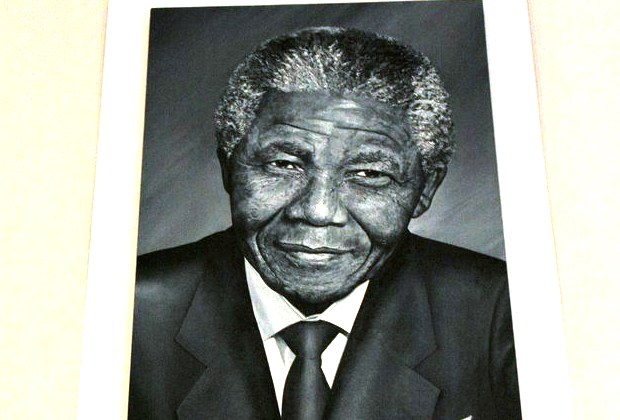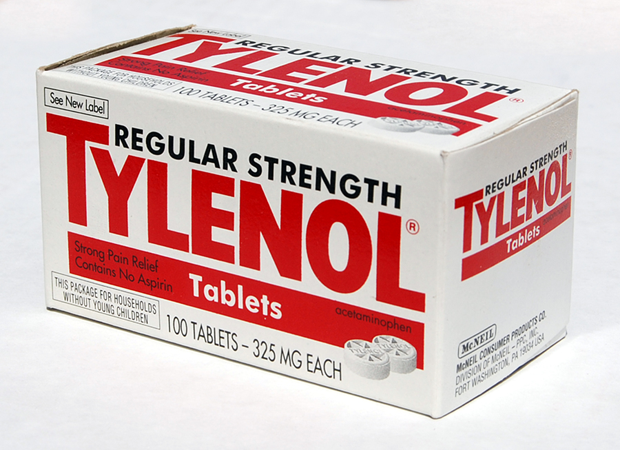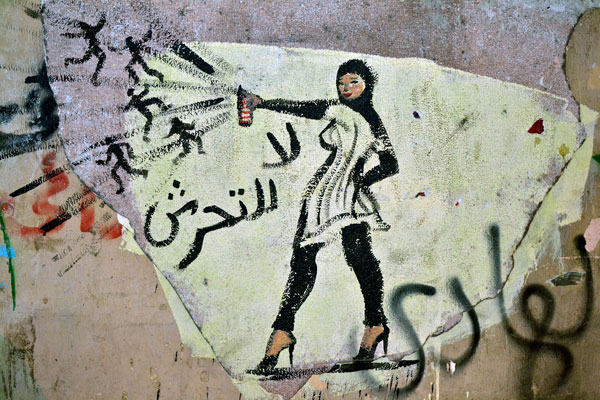Father of the Rainbow Nation
 This is the moment to remember massive changes in South African life that are Nelson Mandela’s legacy says Rachael Jolley
This is the moment to remember massive changes in South African life that are Nelson Mandela’s legacy says Rachael Jolley
(more…)
 This is the moment to remember massive changes in South African life that are Nelson Mandela’s legacy says Rachael Jolley
This is the moment to remember massive changes in South African life that are Nelson Mandela’s legacy says Rachael Jolley
(more…)

French Minister of Justice, Christiane Taubira makes a speech about penal reform in the lecture hall of the Political Science University in Paris. (Photo: Davide Del Giudice / Demotix)
An obscure 16 page-long far-right magazine recently put France’s black justice minister Christiane Taubira on its cover, comparing her to a monkey. The storm of indignation that followed gave unexpected visibility to the magazine and members of the government expressed their desire to sue the magazine or to block the distribution of the infamous issue. Was this an attack on the freedom of the press? Or rather, an occasion for French politicians to look good and to make everyone forget about their own track record?
“Crafty as a monkey, Taubira gets her banana back”, said Minute’s cover, next to a photo of Taubira looking unhappy. The title used a common French phrase (“avoir la banane” means “to be in good form” in French).
Following the outrage caused by this cover, Jean-Marc Ayrault, France’s prime minister, asked prosecutors to investigate whether any law had been broken. The prosecutors decided it had and opened an investigation for “injure publique à caractère racial” (racist public slur). The interior minister, Manuel Valls, announced he was examining whether it was legally possible to block the distribution of the magazine. This, however, has not been followed by any measures.
Taubira, 61, was born in French Guyana, where she started her political career as a supporter of independence for the ex-colony. She has been the driving force behind the 2001 law that recognises the Atlantic trade and slavery as a crime against humanity and a strong advocate of the law allowing same-sex marriage passed this year.
As such, she has suffered an escalation of racist abuse from the opponents to same sex-marriage. Last month, Anne-Sophie Leclere, a Front National municipal election candidate, was dismissed by her party after comparing Taubira to a monkey on her Facebook page and on TV. “I prefer to see her swinging from the branches of a tree than in the governement”, she told a reporter. The FN subsequently sued Taubira for having insulted the party.
During a recent visit to Angers, the minister faced kids from the “Manif pour tous” waving a banana at her and chanting: “Who’s the banana for? For the monkey!” The abuse is reminiscent to what Cécile Kyenge, minister of integration in the current Italian governement, has been facing in Italy and rife with references to colonisation: In an October demonstration of the extremist Catholic Civitas Institute, a priest was heard shouting: “Y’a bon Banania, y’a pas bon Taubira” – a reference to the old advert for Banania chocolate powder which featured a Senegalese infantry man speaking in pidgin French, an advert which is seen as a symbol of French colonialism.
Minute’s words “deny that I belong to the human race”, said Taubira, who refused to prosecute the magazine.
Created by supporters of French colonisation in Algeria in 1962, Minute backed the Front National party in the 1970’s and has been struggling over the past years. Its publishing company went into administration last March and the magazine currently counts only three employees. For the magazine, the infamous front page has been a success: “We wanted free publicity. We got more than we could have dreamed of”, said one of their journalists. Hélène Valette, spokeperson for Minute added: “We take responsibility for this cover. It’s satirical. No one takes offense at the covers of Charlie Hebdo.”
Satirical publication Charlie Hebdo responded to this statement saying: “Some people have actually taken offense at the covers of Charlie Hebdo, among which the Catholic far-right which has sued us 12 times in 20 years (…) Minute does not defend the freedom of the press. It prepares the ground for future racist crimes.”
The law against racist public slur was added in 1972 to the 1881 Law on Press Freedom. France has some of the toughest hate speech laws in the EU. Minute’s editor is risking up to six months in jail and a 22,500 euros fee.
For French politicians and for the press, the racist abuse against Taubira has actually provided an occasion to express unanimous indignation and to push under the carpet their own recourse to racist rhetorics. As Julien Salingue wrote in Acrimed (an independent organisation criticising the media) some of the media coverage of the abuse looked like an investigation led by suspects. “Has France become racist?” recently asked the Parisien newspaper on its front page, forgetting previous covers demonising migrants. The pattern was shared by Le Point and L’Express magazines, known for their sensationalistic Islamophobic covers.
At the launch of the Front National municipal campaign, a journalist from France Inter radio deemed fit to give a platform to 85 year-old Jean-Marie Le Pen and ask him for his opinion of Christiane Taubira. Always predictable, Le Pen said that because Taubira had been independentist she was against France and had been chosen because the colour of her skin could serve as a shield when proposing unacceptable laws.
Interior minister Manuel Valls has used the attacks on Taubira to his political advantage and has been very prompt in saying he wanted to ban the circulation of Minute – which seemed at best useless, as the damage had been done, at worst, counterproductive: it would insure more publicity for Minute and allow the publication to portray itself as a defendant of the freedom of the press. Valls happens to be well-known for its anti-immigrants and anti-Roma policies and rhetorics. France’s national union for undocumented migrants, which is planning a protest in front of the Parti Socialiste headquarters on 27 November, argues that “the liberation of racist speech is a result of the policy of successive governments which have agreed to the idea that “immigration is a problem” and stigmatised Roma people, Muslims and all foreigners, especially undocumented people.”
Henri Maler, one of Acrimed founders, tweeted: “Fighting racism exclusively by outraged declarations and legal action = emptying the ocean with a tea spoon.”
This article was originally posted on 25 Nov 2013 at indexoncensorship.org

ProPublica and This American Life, both which I love, are making some waves for a story highlighting the risks of taking too much acetaminophen (known as paracetamol in the UK). They found that “taken over several days, as little as 25 percent above the maximum dosage – or just two additional extra strength pills a day – has been reported to cause liver damage”.
In a more than 10,000 word piece, they say that over the past decade 1,500 people have died from accidental overdoses of the drug in the US. The story is very critical of “McNeil Consumer Healthcare, the unit of Johnson & Johnson that has built Tylenol [the brand name of the drug in the US] into a billion-dollar brand and the leader in acetaminophen sales”. The story claims that:
McNeil opposed even a modest government campaign to educate the public about acetaminophen’s risks, in part because it would harm Tylenol sales.”
They also criticise the FDA, the US drugs regulator for not taking tougher action, but the agency said:
FDA officials said the agency saw the benefits of keeping acetaminophen widely available as outweighing the “relatively rare” risk of liver damage or death. Some patients cannot tolerate drugs such as ibuprofen, and for them acetaminophen may be the best option, said one agency official.”
I do appreciate that the story gave a bit of context in quoting the figures for accidental deaths of ibuprofen, another non-prescription pain killer. The article says deaths due to ibuprofen overdose are negligible.
But is the fact that acetaminophen can cause liver damage being hidden by an avaricious company with complete disregard for public safety or by an over-stretched US drugs regulator? Hardly. Google “acetaminophen risk”. The first result in the US is WebMD. See risks:
When taken incorrectly, however, acetaminophen can cause liver damage. And your risk of liver damage may be increased if you drink more than three alcoholic drinks every day, take more than the recommended dose (overdose), or if you take any additional drugs that also contain acetaminophen at the same time.”
Read a little further along under the next subhead, How to Use Acetaminophen Safely.
Make sure to use the correct dosage. Don’t take more acetaminophen than directed or take it more often than directed. Taking more than recommended can damage your liver — and won’t provide any more pain relief.”
We’ve got a couple of bottles of acetaminophen that we have bought in the US. One bottle from US pharmacy Walgreens says, “See New Warnings Information”. It has a specific liver damage warning. It has in bold: “Overdose warning: Taking more than the recommended dose (overdose) may cause liver damage.” Both bottles warn not to take with other drugs that contain acetaminophen or if you drink three or more alcoholic drinks per day.
Ok, I thought. Maybe McNeil is trying to protect their brand, Tylenol, as the story says over and over again. I went to the Tylenol site, the official site for McNeil’s acetaminophen brand, and at the bottom of the page, granted not prominently displayed but there, is a link called: Tylenol labeling change.
New Dosing Instructions: Beginning Fall 2011
Acetaminophen, the active ingredient in TYLENOL®, can be found in more than 600 over-the-counter (OTC) and prescription medications, such as TYLENOL®, SUDAFED® Triple Action™, NyQuil®, Percocet® and Vicodin®.* Acetaminophen is safe when used as directed, but when too much is taken (overdose), it can cause liver damage. Some people accidentally exceed the recommended dose when taking multiple products at the same time, often without realizing they contain acetaminophen or by not reading and following the dosing instructions.To help encourage appropriate acetaminophen use, the makers of Extra Strength TYLENOL® have implemented new dosing instructions lowering the maximum daily dose for single-ingredient Extra Strength TYLENOL® (acetaminophen) products sold in the U.S. from 8 pills per day (4,000 mg) to 6 pills per day (3,000 mg). The dosing interval has also changed from 2 pills every 4 – 6 hours to 2 pills every 6 hours.“
Emphasis mine. Was McNeil against educating the public because they worried about damaging sales of their flagship brand? It would seem not.
Education Campaign: Get Relief Responsibly™
In addition to the new dosing instructions on the OTC label, the makers of TYLENOL® launched Get Relief Responsibly™, an initiative designed to educate consumers about the appropriate use of OTC and prescription medications, particularly those containing acetaminophen, and the importance of reading and following medication labels. As a part of this initiative, the makers of TYLENOL® have created a new website www.getreliefresponsibly.com. The site includes an interactive Acetaminophen Finder tool to help consumers identify products that contain acetaminophen and build a personal acetaminophen medication list to share with their healthcare provider or pharmacist.”
I don’t know how prominent the campaign was, as I live in the UK. And I thought that maybe they launched this quietly in response to the ProPublica investigation. Nope, the date on the page is autumn 2011. This would be consistent with the “See New Warnings Information” label on our bottle of Walgreen’s Pain Reliever PM. It undermines all the assertions in the investigation that McNeil has resisted efforts to reduce dosages or engage in public education.
These are facts hidden in plain view: Don’t take too much acetaminophen, especially with alcohol. Taking more than recommended won’t do you any good, and it could wreck your liver. As a matter of fact, we’re going to recommend taking less of our flagship product.
It took me 30 seconds to find the relevant info on WebMD, and another 30 seconds to quickly scan the Tylenol site. How long did it take ProPublica and This American Life? TWO YEARS AND $750,000.
As an editor, I keep saying to myself: Where’s the story here? The headline, anodyne even by American standards, is “Use Only as Directed”. My response: No shit. I mean, really? If you use a drug above the recommended dosage, there is a risk. If McNeil has ruthlessly tried to cover up the idea that if you take too much of the drug it will wreck your liver, they’re doing a really poor job.
Labelling on US acetaminophen bottles undermine repeated assertions in the investigation that the FDA has resisted calls for clearly labelling about overdose risks, especially with respect to liver damage. It is clearly listed under Warnings, in bold, on both bottles of acetaminophen we have.
Where is the breaking news? Has the FDA covered up the fact that if you take too much of the drug you can die? No, it hasn’t. Easily available information, both online and on the packaging, is clear about the risks of taking an overdose. But the key thing is that if you take too much of anything, even water, it can kill you. In technical terms it’s called LD50, the median lethal dose.
Whist Pro Publica’s piece does remind the reader to be more careful about taking other medications that might have acetaminophen and to more carefully monitor dosage, it isn’t revealing any new information, nor is it exposing a cover-up.
The story includes a clock, counting how long it has been since the FDA created an expert panel to evaluate the safety of over-the-counter pain relievers. The agency has not yet completed its work. This is about as damning as the revelations gets:
From 2001 to 2010, annual acetaminophen-related deaths amounted to about twice the number attributed to all other over-the-counter pain relievers combined, according to the poison control data.
In 2010, only 15 deaths were reported for the entire class of pain relievers, both prescription and over-the-counter, that includes ibuprofen, data from the CDC shows.”
If acetaminophen, at roughly 150 deaths per year, is twice the number of all other over-the-counter and prescription pain relievers combined, then doesn’t this undermine the entire assertion that the there is a pressing need for the FDA to have this expert panel deliver its findings? It doesn’t seem that pain killers as a class of drug are particularly dangerous at all.
Back to acetaminophen, in 2010, the last year the article has figures for fatal accidental acetaminophen poisoning, 166 Americans died. The CDC reported that 2,468,435 Americans died that year. The number who died from acetaminophen poisoning is 0.007 percent of total deaths in the entire country. Tragic? Yes. Common? Hardly. Ibruprofen deaths are negligible, especially compared with the 32,788 Americans who died in road traffic accidents. Journalists are incredibly poor at communicating relative risk, and this over-the-top investigation only serves to reinforce that. What pressing public health crisis has been identified at a cost of $750,000?
I don’t mean to dismiss the suffering of the nearly 150 people who died or of their friends and loved ones, and I think that this story is worth reporting, but in the right terms. For stories like this, I can even see the need to remind people every few years, just to drive home the point that taking too much acetaminophen is risky, especially if you drink a lot. However, I don’t think this story comes even close to rising to the standard of a two-year investigation costing hundreds of thousands of dollars.
Peter Osnos at The Atlantic praises the story and asks who will pay for expensive, investigative coverage. The piece seems to be equating the cost with impact. To me, as I said in a comment on the piece, this is not a piece for which we should be getting out our “yay investigative journalism” pom-poms. It proves that investigative journalism can be expensive, yes, but is it going to have an impact? This story will have no more impact than a run-of-the-mill public service piece that could have been bashed out in an afternoon.
Not all investigations lead to publication, and I know that some investigations take time to develop, but I cannot see why this story took two years and three-quarters of a million dollars to reveal information that can be found with a quick search online. As a journalist and editor, I have to ask what is the opportunity cost? The opportunity cost is:
The cost of an alternative that must be forgone in order to pursue a certain action. Put another way, the benefits you could have received by taking an alternative action.”
In this era of scarce resources, it is even more important to ask what opportunities are foregone because resources are deploying elsewhere. It’s Econ 101, but it is an incredibly important question that we need to ask. Two years and three-quarters of a million dollars is a huge investment. It’s the kind of resource that most journalists would give their spare kidney for, but if we’re going to sink that kind of time and precious coin into a story, that story better be worth it.
When I started this post, I thought this was simply about an overly expensive investigation. It took me almost no time at all to undermine the core elements of this story with basic online research. McNeil, if they trying to bully the FDA into inaction, appear to have failed. If a minimal bit of online research calls into question key elements of this story, there are even bigger problems than the excessive cost and time.
UPDATE: I did originally post this under the headline “30 seconds to debunk”, which in retrospect is a bit harsh. ProPublica has meticulously documented their points to the point where I think they completely diluted the impact of the piece. If as a journalist, you want to draw attention to the dangers of the drug, the piece should have been much, much shorter, highlighted the low margin for error in taking more than the recommended dose, especially with alcohol and been done with it. The story has problems, and one of the biggest is that it is incredibly self-indulgent. It fails the most basic commandment of a good piece of journalism: Get to the point.

(Photo: Melody Patry / Index on Censorship)
Sexual harassment has been widespread in Egypt for decades but since the January 2011 uprising that toppled former President Hosni Mubarak, the problem has taken on epic proportions becoming what rights activists now describe as “an epidemic”. Not only has there been a dramatic increase in the number of harassment cases reported , but the level of violence too, is unprecedented with mob sexual assaults becoming rampant during street protests.
No fewer than 91 girls and women were reportedly gang raped and sexually assaulted in just four days during mass protests demanding the ouster of Islamist president Mohamed Morsi last July. Rights activists say the number of assault cases could be even higher as there is the possibility that some cases had gone unreported. Most of the attacks occurred in or near Tahrir Square in downtown Cairo where hundreds of thousands of opposition protesters had gathered to demonstrate against the Muslim Brotherhood president and later, to celebrate his downfall. Vicious mobs used metal chains, sticks , blades and knives to attack female protesters despite the presence of volunteer vigilante groups keeping an eye out for harassers.
In response to the surge in harassment, several civil society organisations have sprung up in recent months with the aim of curbing sexual assaults and protecting victims of harassment. One such organisation is the Anti-Sexual Harassment Campaign , an outreach movement set up in November 2012 to keep track of harassment cases and send teams of volunteers to protest sites to intervene in mob assaults. The organisation is just one of several movements monitoring protest sites and offering ‘safety advice’ to women. The emergence of such movements is evidence of the growing unwillingness to tolerate street harassment as public awareness about the problem increases .
Police in Egypt have meanwhile, formed a special unit of female police officers to combat street harassment in particular, and violence against women in general. While the unit is still small in size –consisting only of ten women—rights campaigners believe it is “a step in the right direction.”
“Often women victims of harassment are too ashamed to report incidents of harassment and sexual assault. In some cases , they are afraid of getting blamed”, Azza Kamel , founder and director of women’s rights organisation Appropriate Communication Techniques (ACT), said in an interview. “They may feel more at ease talking to another woman about the issue,” she added. Her organisation has run a hotline for eyewitnesses and women victims to report sexual harassment or assault cases which are known to increase and get more violent during public holidays and religious festivals.
Fatma Khafagy, chairperson of the National Women’s Council ‘s Ombudsman Office meanwhile, lamented that male security officers do not take sexual harassment seriously enough and at times, themselves harass women who come forward to report such incidents.
With a background in psychology, the women police officers have undergone training in communicating, listening and helping to rehabilitate victims of harassment and assault. “We encourage women to speak up and report harassment. They should not blame themselves for causing the harassment and must not hesitate in seeking justice”, said Colonel Manar Mokhtar, one of the officers at the new police unit for combating violence against women. “We also urge them to seek professional counselling that can help them recover from their traumatic experience.”
Victims of harassment often complain of a “culture of impunity” at the state level, saying that perpetrators often go unpunished for their crime. “But that is slowly changing with the growing awareness about the problem,” Khafagy noted.
She acknowledged the pressing and urgent need for legislation to counter the problem, given the surge in violence against women in Egypt, post revolution. A study conducted in April by the Egyptian Center for Women’s Rights revealed that 99.3 percent of Egyptian women have experienced some form of sexual harassment.
“In the absence of laws against sexual violence, we can only expect street harassment and sexual assaults to continue unchecked”, argued Khafagy.
A bill on violence against women that was recently drafted by the National Council for Women and was under discussion in the now-disbanded Shura Council, the upper house of parliament has been shelved due to the political instability.
Khafagy and other rights activists however, believe that legislation won’t be enough to tackle what they described as “a social scourge.”
“The answer lies in changing people’s attitudes. Educating women about their rights and getting men to realize the extent of the harm they inflict on the women is the only way that we can change existing behavioural patterns,” insisted Kamel. “But change cannot happen overnight; it takes time.”
For Egypt’s women victims of harassment, it cannot happen fast enough.